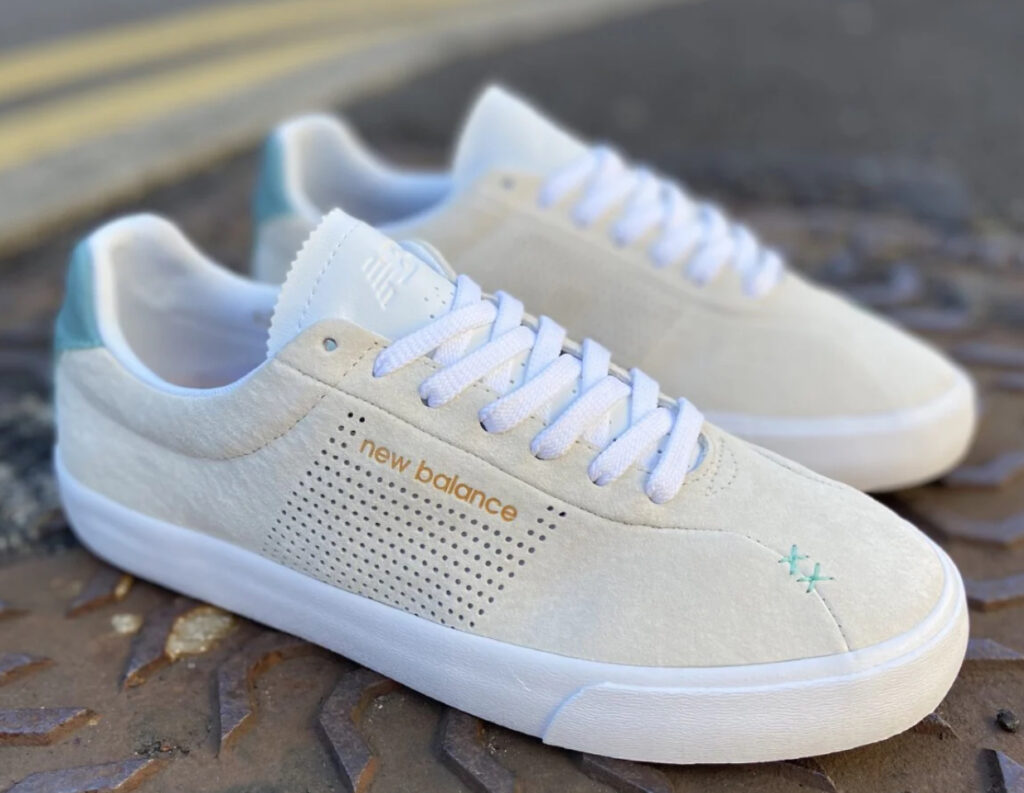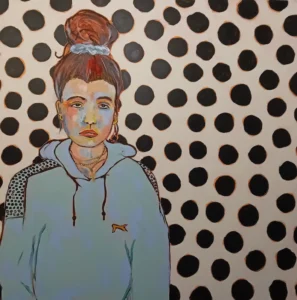
Heritage, Skatecraft, and the Emotional Geography of Liverpool
In skateboarding, as in any true subculture, time is measured not in years but in spots, scenes, and stories. Legacy is passed not through ceremonies but through grip tape, city steps, and video parts that move like word-of-mouth epics. In that sense, the New Balance Numeric x Lost Art NM22 collaboration isn’t just a footwear release—it’s a resurfacing. A reassertion. A prevailing of one city’s enduring skate spirit against the flux of fashion, hype, and cultural dilution.
Dubbed the NM22ART, the model arrives as more than a product. It’s a signal. A coded message to those who’ve pushed through Liverpool’s curbs and crust, and to those beyond who understand that the most powerful collaborations are not just between brand and shop—but between generations, between artists and athletes, between cities and their soil.
Lost Art: More Than a Shop, A Stronghold
To understand the resonance of this shoe, one must first know Lost Art. Not merely one of the UK’s longest-running skate shops, Lost Art has long functioned as Liverpool’s cultural axle—a headquarters for skateboarding’s most enduring values: independence, creativity, and community. It’s a shop with dirt under its nails, handbills on its walls, and a memory in every brick.
For over two decades, Lost Art has maintained its role as a supporter of local scenes, a springboard for talent, and a witness to the skate world’s countless evolutions. While many shops succumbed to market pressures, corporate dilution, or simply burnout, Lost Art held its line—prevailing not just by surviving, but by nurturing the spirit of street-level skateboarding.
So when New Balance Numeric (NB#) chose to partner with the Liverpool institution for a dedicated edition of the NM22, it wasn’t a market-driven move. It was a recognition. A resurfacing of a longstanding respect between brand and borough.
NM22ART: Details Written in Dust and Concrete
The NM22ART arrives with a refined silhouette, clean paneling, and a construction that foregrounds performance without screaming it. Based on the existing NM22 model—a vulcanized, cupsole hybrid built for grip, boardfeel, and durability—the ART edition adds location-specific cues and shop-driven flourishes that elevate the shoe from collaboration to commemoration.
A dark, resilient upper mirrors the urban tones of Liverpool’s architecture—bricks, docks, and rain-streaked concrete. Embossed heel detailing references Lost Art’s iconography subtly, with the precision of a brand that doesn’t need to shout to be heard. Internal graphics nod to city landmarks and skate touchpoints, allowing the wearer to carry Liverpool with them, however far they roll.
What distinguishes the NM22ART isn’t its flash. It’s its grounding. Every stitch, every embossed mark, every color choice feels embedded in place—less an aesthetic decision than a cultural one. This is not product for tourists. This is made for the ones who know the map by feel, by sound, by scrape.
Skateboarding as Archive: The Film
Complementing the shoe is a video offering that transcends promotional material to become a document of cultural continuity. Filmed and edited by Oliver Birch and starring Charlie Birch, Tom Knox, Mackey, and a wide cast of the Lost Art family, the film is a moving, asphalt-level portrait of how skateboarding remembers itself—not through monument, but through motion.
From the opening frames, there’s a sense of lineage. The camera doesn’t linger on the shoes, it chases the lines—through alleys, under viaducts, across ledges that hold decades of wax and stories. The skateboarding is raw, technical, honest—never polished for aesthetic perfection, but captured in the style of classic British scene videos. The kind that made you want to skate right now, not wait for the next drop.
It’s also familial. The appearance of Charlie and Oliver Birch brings bloodline into the lens. Filmed by brother, skated by brother, it’s a literalization of what skateboarding often means: keeping it in the family. Not just biologically, but through style, effort, loyalty. These are not imported aesthetics. These are expressions rooted in place, filmed by people who live and know the corners.
Resurfacer Theme: Repair and Return
The notion of resurfacing runs through both the shoe and the campaign. It’s an acknowledgment that skateboarding, especially in a place like Liverpool, doesn’t move in straight lines. It weaves. It gets buried, lost, then unearthed again. It requires resurfacing—both literally, in re-paving rough spots, and spiritually, in reviving energy.
In that sense, the NM22ART is not just a shoe but a resurfacer. It draws attention back to a city that has always mattered in skateboarding’s UK narrative, even when it wasn’t fashionable. It puts shop history, local faces, and video authenticity at the center of the story, refusing the pull of diluted, mall-ready branding.
In doing so, it also proposes a model for how skate brands can partner with community institutions: with respect, with tact, with a commitment to storytelling that doesn’t erase the people who built the foundation.
Prevail: The Act of Remaining
“Prevail” is not a word often used in product campaigns. It sounds too heavy, too historical. But here, it fits. Lost Art’s survival through decades of economic fluctuation, gentrification, and fashion churn is an act of prevailing. The skateboarding in the NM22ART video is not the kind of perfectly manicured showcase you find in energy drink edits—it’s perseverance on display. It’s tricks fought for, weather endured, foundations respected.
Prevailing means you never left. You held on. You kept filming, kept selling grip, kept mentoring younger skaters, kept opening shop even when the margins narrowed. You didn’t “bounce back” because you didn’t disappear.
This is what the NM22ART represents—not just a victory, but a record. Not just a connection, but a chapter in a longer book about Liverpool, about skateboarding, about the value of sticking around.
Impression
The New Balance Numeric x Lost Art NM22ART shoe and its accompanying film are not interested in fleeting virality or product-as-spectacle. They’re concerned with endurance—the quiet kind. The kind that keeps a shop open for 20 years. The kind that keeps a camera rolling on rainy days. The kind that lives in city stone and skater ankles.
This release is not just about skateboarding in Liverpool. It’s about how to hold space in a world constantly moving on. It’s about the value of place, the necessity of archive, and the power of resurfacing with something real.
No comments yet.








